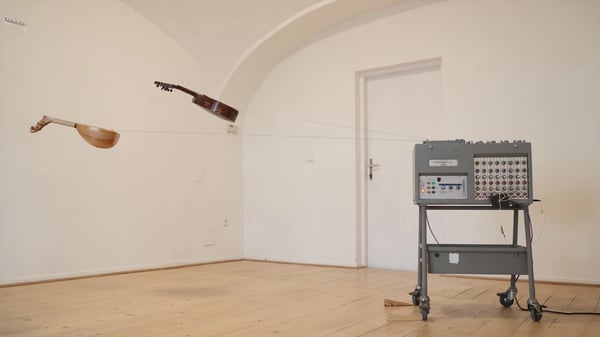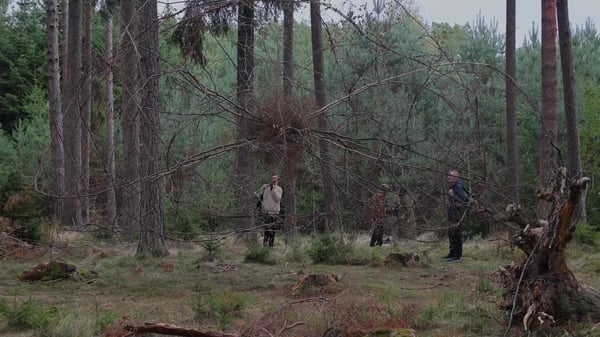Krišs Salmanis does not like to define what he does. He can admit that he likes to work with moving image the most, especially with animation. His work could even be referred to as being experimental animation, which allows him to do anything from painting, drawing, photography or model making etc. In his art, he does not follow a topic or solve a problem, instead there are things that he thinks about, which gives him the urge to make these ideas. He operates using his intuition.
Salmanis’s last exhibition was called “The Fragility of Trust”, which he stole from a magazine article. From this title, Salmanis interpreted that the relationship of trust is a difficult, fragile mechanism. He already imagined his vision in a space in Riga, Latvia. A couple of other works grew from this idea, and that is why they work as separate pieces, but somehow also work together in an installation. Salmanis likes to know well in advance where his work is going to be exhibited – not that they belong to a specific site, but because the artist likes to think about how those works will look within a known space. He also likes to think about light, and which side people will enter the gallery, what the viewer sees first and he imagines what they may think when looking at his first piece and then discovers there is more.
When talking about the title of his exhibition: Insomnia, 2010, Salmanis thinks it both poetic and pompous. He makes the observation that all his titles from solo exhibitions suggest that he is an artist unsatisfied with life or someone who has problems. However, he proclaims he is not a dark person, therefore, perhaps his titles are ironic. For Salmanis, irony is a good shield for his work to hide behind, close friends know that he is a serious person and his works have a deeper meaning. If a spectator leaves the gallery satisfied because it’s a good joke that is fine, but with his works there is a much more serious level to be obtained.
A friend of Salmanis’s described some of his works as being made by a person who is using the maximum means to achieve the minimum result. Sometimes the piece is very short, and looks simple in appearance, but at least he knows the time it has taken to make it and thinks if the spectator really looks they will realise it has taken some time to do. Salmanis believes the best things he has created have been made by reducing and getting rid of all that is decoration or not essential. The outcome is rather simple, sometimes they seem pathetic, but this is intentional. Salmanis enjoys the painstaking work involved with producing animation, made evident in works such as Rondo, 2006 and The Moment Will Come, 2003.
How to Become an Artist, 2004, 2011 – is a book with 100 pages, in an addition of 100 copies were published. The first edition was in Latvian. It became a rarity, a collector’s item. Salmanis made a second edition, which is an expanded version of the first one; it is bilingual (English and Latvian), and has an appendix of 10 pages. Salmanis mentions that all the pages are blank, both in the first edition and in the second one, and also in the appendix.
100 Per Cent Disappointment, 2004 – is an exhibition he put together with another artist. 100 Per Cent Disappointment, is titled this because that is what they felt after they had graduated. Previously professors would assign tasks for them to do, but now they were left alone, to think for themselves. Suddenly he came to the realisation that until then he was only executing tasks rather then finding them for himself. He hopes that by now this has changed. He feels that he at least has become a person who thinks of the tasks or the reasons why to do things.
By Emily Naine





